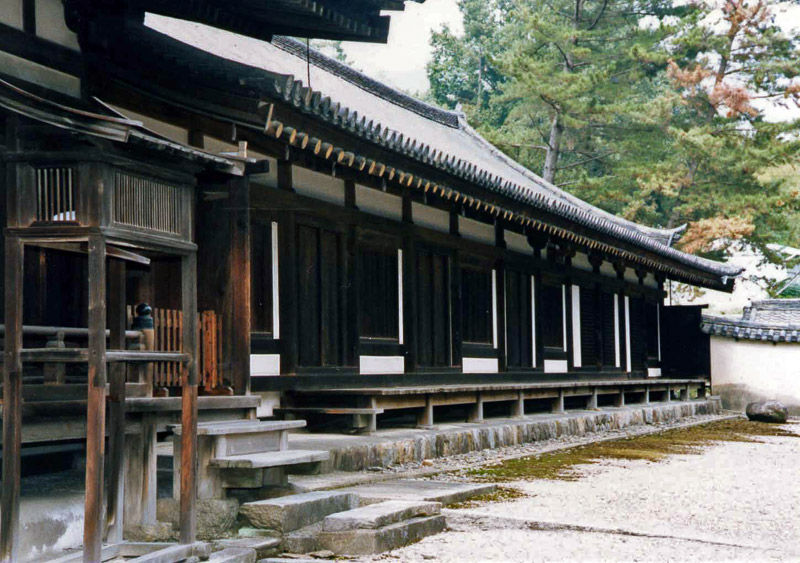|
||
 |
||

Houryuuji Sai-in Higashimuro 法隆寺西院東室 (Nara)
(C)2001 Japanese Architecture and Art Net Users System. No reproduction or republication without written permission.
掲載のテキスト・写真・イラストなど、全てのコンテンツの無断複製・転載を禁じます。
|
||||||
| soubou 僧房 | ||||||
| KEY WORD : architecture / buildings & structures | ||||||
| Also written 僧坊. Buddhist priests', monks' or nuns' living quarters in the 7-8c. One of the seven buildings required in a temple complex in that era. The word soubou could refer to the entire building or to an individual room. The exact configurations of monks' quarters in the ancient period was unclear until the *Higashimuro 東室 and *Tsumamuro 妻室 at Houryuuji 法隆寺, and the Gokurakubou 極楽坊 at Gangouji 元興寺, both in Nara, underwent excavation, dismantling, and repair in 1945. The results of these undertakings revealed the dormitories, to be located on three sides of the grounds and known as the north, east and west dormitories kitamuro 北室, higashimuro 東室, *nishimuro 西室 respectively. But not all temples followed this plan. At Toushoudaiji 唐招提寺 dormitories were only to the east and west of the *Koudou 講堂. At kokubunji 国分寺, the provincial temples that were established by an imperial edict in 741, living quarters were built north of the other temple halls. Kitamuro were common and limited to ten rooms. The number of monks were few compared to those attached to the large, thriving temples in Nara. The only extant soubou are the Higashimuro and the Tsumamuro at Houryuuji. The former is a large structure 6.7m across and 12.17m lengthwise. With the introduction of the new esoteric sects of Tendai 天台 and Shingon 真言 in the 9c, the priests' dormitories were remodeled to allow them in part to become Buddhist halls *butsuden 仏殿. A good example is Gangouji Gokurakubou, remodeled in the Kamakura period. Subsidiary temples *shi-in 子院, became common and were built in the hills surrounding the new capital, Heiankyou 平安京. Thus, it became impractical to construct dormitories on a rigid plan. When, in the 12c, the Zen 禅 sect was introduced, buildings that not only housed the monks but also included the refectory became common. These were called *soudou 僧堂. | ||||||
 Houryuuji Sai-in Higashimuro 法隆寺西院東室 (Nara)
|
||||||
| REFERENCES: | ||||||
| *garan haichi 伽藍配置, *taibou 大房, *shisoubou 私僧房 | ||||||
| EXTERNAL LINKS: | ||||||
| NOTES: | ||||||
(C)2001 Japanese Architecture and Art Net Users System. No reproduction or republication without written permission. 掲載のテキスト・写真・イラストなど、全てのコンテンツの無断複製・転載を禁じます。 |
||||||